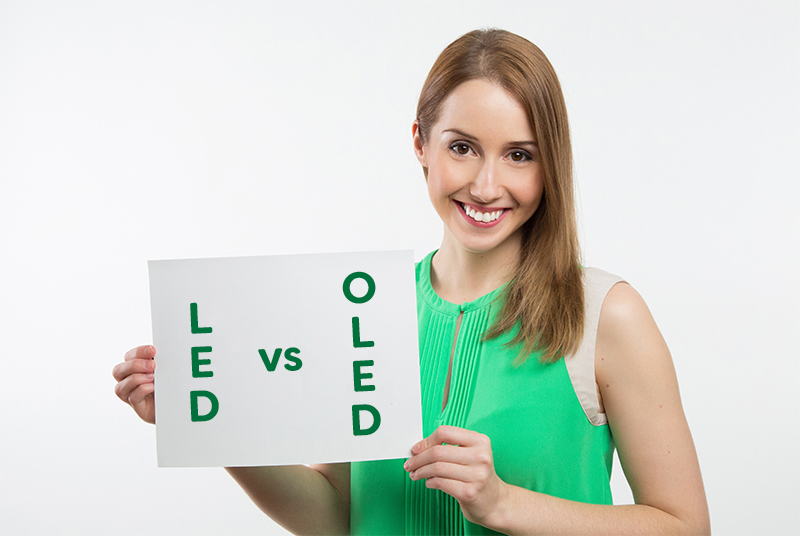With the plasma TV now extinct there are now two types of TVs: LED and OLED.
An LED TV is a type of LCD TV. LCD stands for liquid crystal display. A layer of liquid crystal solution is suspended between two glass panels. Millions of transistors use electrical charges to manipulate the crystals, creating the image you see. The liquid crystals themselves produce no light, so the light is provided by a backlight.The liquid crystal is like a shutter and the light shining through creates the image.
A traditional LCD TV uses fluorescent lamps for its backlight. The LED TV uses the same LCD screen, but instead of fluorescent lamps providing the light, LEDs (light emitting diodes) do the work.
There are three types of backlighting:

Edge-lit: Most TVs fall into this category. LEDs are arranged in strips along the edges of the TV. Light is redirected to all parts of the screen to produce a uniform image. Edge-lit TVs are very thin.
Direct-lit: This method uses a grid of LEDs behind the entire screen. It uses a smaller number of LEDs, saving money. It also results in a thicker TV.

Full array local dimming: This is the best method and found on the top-rated LED models. It uses the same grid as the direct-lit method, but it uses a greater number of LEDs. Each LED is dimmable, which means the TV can have better contrast. These TVs have the darkest black levels among LEDs.
OLED (pronounced “oh-led”) TVs are the newest type of TV and exclusive to LG. In an OLED TV each pixel is its own light source so you don’t need a backlight. Because there’s no backlight the TVs are incredibly thin (the thinness of a pencil). Additionally, each pixel can be completely turned off, resulting in true black.
Size
Winner: LED
LEDs are commonly available up to 88”, and Sony offers a 100” model. OLEDs are available up to 77”, but cost twice as much as a similar sized LED in that size. View large TVs
Resolution
Winner: Tie
Both TVs are available in 1080p and 4K, although there is only one OLED model currently offered in 1080p and it’s a 55” screen.
Contrast / Black Level
Winner: OLED
Higher contrasts create a more realistic images. OLED pixels turn off completely, creating a true black and giving OLEDs an infinite contrast ratio. LED blacks tend to be more of a charcoal grey color, although the best LEDs are capable of producing darker blacks. Full array local dimming helps a great deal on LEDs, but it doesn’t match the absolute black of an OLED.
Color
Winner: OLED
OLEDs have the best color because their pixels produce an extra color: white. LEDs are limited to red, green, and blue. There is good news for LEDs though: a new technology called quantum dots produces brighter and more accurate colors.
Viewing Angle
Winner: OLED
Because of their backlights, LEDs can experience distortion when viewed at wide angles. OLEDs produce their own light and you would have to view the TV at a very extreme angle to see distortion.
Motion Blur
Winner: LED
A TV with motion blur issues will show a trail behind moving objects on the screen. One of the best ways to reduce this effect is to insert a black frame between every frame of a video—something only available on select LED models at present.
Uniformity
Winner: OLED
Uniformity refers to the uniformity of brightness across the screen. Because OLED pixels are individually powered by themselves, the brightness is controlled and uniform. LEDs rely on backlights, and the light from an individual LED can leak into a pixel that belongs to a different LED, a process known as “blooming.”
Cost
Winner: LED
LEDs are cheaper than OLEDs, but the LEDs that begin to approach OLED picture quality also begin to approach OLED prices. Even though OLEDs cost more, they have the superior picture.
OLED TVs may have the best picture, but LED TVs still pack a punch and are far better than previous years’ models.
For in-stock and ready to ship TVs, click here.
